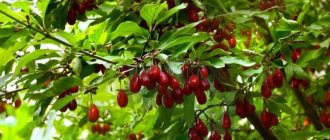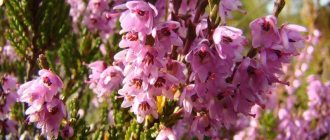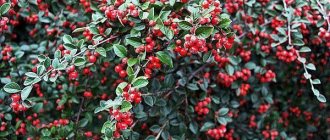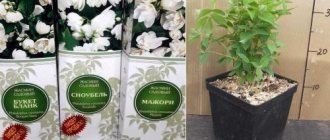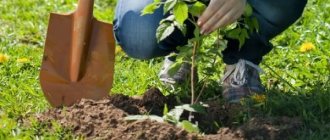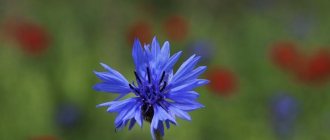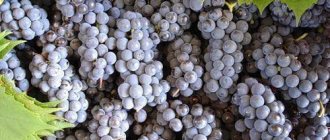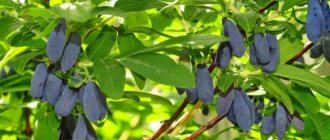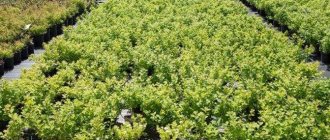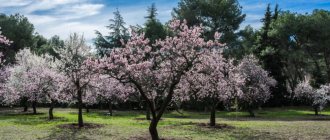Dogwood is a long-lived shrub, a heat-loving crop, growing naturally in the Caucasus and southern regions. The plant is a natural healer: it has anti-inflammatory properties, helps lower blood pressure, and is rich in vitamins. Breeders have been working for a long time on developing plant varieties, improving the taste of berries and yield. New varieties were bred, differing in color, shape, weight of berries, and purpose of the bush. However, the main characteristics remained unchanged. Currently, more than 50 varieties of dogwood are known.
Characteristics of the best varieties
Representatives of the species have common characteristics:
- drought resistance,
- frost resistance,
- resistance to diseases,
- unpretentiousness to soil, care,
- ability to grow in partial shade,
- ultra-early long flowering, cross-pollination,
- annual fruiting
- medicinal and decorative properties.
The taste of the berries of all representatives of the culture is sweet and sour; there is a small seed inside the fruit. The best varieties are characterized by the following qualities: high yield, the largest berry size. Among the variety of bred varieties, specimens differ in color: there are various shades of yellow, orange, the whole spectrum of red - to almost black.
The word “dogwood” (Turkic) is translated as red.
The fruits differ in size - from 3 to 8 g. Large berries are used in cooking, small ones have decorative and medicinal value. The fruit shape is round, oval, barrel-shaped, pear-shaped, bottle-shaped.
When choosing a variety, the ripening period of the fruit is of great importance. Dogwood begins to bloom in early spring, ripening occurs after 200 days. For regions with short summers, early varieties are chosen. Varieties differ according to ripening time:
- Early: ripen until mid-August. Such varieties are planted in northern latitudes. Popular varieties: Grenadier (August 4-11), Elegant (August 5-10), Elena (August 10-14), Vavilovets (August 10-25), Alyosha, Nikolka.
- Medium ripening period: Harvest from the 2nd decade of August to the 2nd decade of September. The best representatives: Nezhny, Coral Brand (August 17-20), Lukyanovsky, Vydubetsky (August 23-25), Starokievsky (from August 25).
- Late: 2-3 decades of September. Examples: Kostya (September 5-10), Firefly (August 25-September 10), dogwood “Semyon” (September 10-15).
Comparative table of distinctive qualities of the best varieties
| Ripening period, Variety name | Berry weight (g) | Yield (kg) | Fruit color | Berry shape | |||
| Yellow | Red | Oval | Pear-shaped | Bottle shop | |||
| Early | — | — | — | — | — | — | — |
| Elena | 7 | 45 | — | + | + | — | — |
| Elegant | 6-9 | 40 | — | + | + | — | — |
| Vavilovets | 6-7 | — | — | + | — | + | — |
| Nikolka | 6-7 | 40 | — | + | + | — | — |
| Average | — | — | — | — | — | — | — |
| Alyosha | — | 20-30 | — | — | — | — | — |
| Vladimirsky | 9 | 60 | + | — | + | — | — |
| Firefly | 4,5-5 | 50 | + | — | — | — | + |
| Late | — | — | — | — | — | — | — |
| Semyon | 6-8,5 | 27 | + | — | — | + | — |
Ripening of berries can occur simultaneously or over a long period of time. The dogwood variety “Semen” can be harvested in a week, and the fruits of “Firefly” will remain on the bush for almost a month.
In addition to preferences for yield and appearance, summer residents pay attention to the zoning of the variety.
In the southern regions, among the best varieties they choose Yantarny, Coral, Nezhny, Lukyanovsky. For planting in northern latitudes, it is preferable to stick to the early varieties Svetlyachok, Vladimirsky, Vydubitsky, Elena. All trees and shrubs of the crop can become the “highlight” of the garden and perform design functions. They bloom early and have long-lasting yellow and white flowers. The plant is also attractive during the fruiting period. Some varieties are bred specifically for decorating parks, squares, and gardens.
Among the ornamental shrubs, the following varieties are in demand:
- "Pyramidalis", having a pyramidal crown,
- "Aurea Elegantissima" with exotic foliage of cream and white color, with a red tint.
- "Variegata" is distinguished by its distinctive foliage with a white border. There are varieties with fruits of different colors - white, yellow, pink.
Dogwood tolerates shearing well. Even an amateur gardener can form a tree with the required crown - round, spreading - to decorate the site.
general information
Dogwood - what is it? We are talking about a plant. The shrub has become widespread in Asia and Europe. In total, there are 4 varieties of this plant found in nature, which differ in the appearance of the fruit. The berries can have a wide variety of shades of red and vary in shape.
Some varieties may be pear-shaped, while others may be round or oblong. Regardless of the dogwood variety, its berries are very beneficial for health. The shrub adapts very well to any climatic conditions, and the life cycle lasts up to 250 years.
Despite the fact that the fruits ripen only in late autumn, they bloom very early. Flowering usually begins in early spring, when leaves have not yet appeared on the bush. There are many different recipes for preparing these fruits.
Dogwood varieties
We bring to the attention of summer residents examples of the best unique plant varieties.
White dogwood
The plant blooms white (unlike the vast majority of representatives of the culture with yellow flowers), hence its name. The berries are yellow with a small seed. In autumn the leaves turn red, gradually turning purple. It has pronounced medicinal and decorative properties.
Wild dogwood
The wild shrub grows in the southern regions: Crimea, Moldova, the foothills of the Caucasus, Transcarpathia. Blooms yellow. The berries are small and red. It has pronounced medicinal properties. The most unpretentious to soil and care.
Amber dogwood
The name dogwood refers to the color of the plant's berries: yellow, similar to amber. This is precisely why dogwood stands out from the general group of cultural representatives. The berries are small (3.5 g) and tend to fall off during ripening. Fully ripened fruits with a sweet taste. It has the largest amount of sugars and pectins in its composition. Medium ripening, long in time. Lasts about a month, from the second ten days of August to the second ten days of September.
Dogwood Lukyanovsky
Tree with a rounded compact crown. The variety's large berries (6 g) are bottle-shaped and dark red in color, which turns black when fully ripe. Resistant to shedding. The fruits can remain on the tree for up to a month after ripening.
Jamaican Dogwood
The Piscidium tree, which is a member of the legume family, is only called dogwood. The bark of the tree has a specific smell and taste, and is a medicine for the treatment of a number of diseases. It is used strictly under the supervision of a doctor, since its improper use can lead to poisoning of the body. Distributed in Central America and the West Indies.
Common dogwood (or male dogwood)
Male dogwood (Cornus mas) belongs to the tree family, which has many representatives of ornamental shrubs and trees. It is distinguished by edible fruits. It grows in the foothills of the Caucasus, in the Crimea, the southern regions of Ukraine, and in Asia Minor. The height of the bush (or tree) reaches 6 meters. Blooms with yellow flowers. The fruits are oval, small, red. It has the medicinal properties inherent in dogwood to the highest degree.
Beneficial features
Dogwood is valued for its rich vitamin and mineral composition. The amount of ascorbic acid is not inferior to rose hips and lemon. Beneficial properties are also contained in leaves, bark, and flowers. Flocks and tinctures are prepared from them.
Dogwood has the following therapeutic effects:
- diuretic;
- choleretic;
- anti-inflammatory;
- immunostimulating;
- restorative;
- tonic;
- healing;
- antibacterial;
- antifungal.
Juice, decoctions, tinctures are recommended for use for:
- colds;
- low immunity;
- chronic fatigue, weakness;
- signs of malaria;
- high temperature, fever;
- congestion in the gallbladder and bladder;
- fragility of blood vessels;
- impaired metabolism;
- vitamin deficiency;
- anemia, low hemoglobin;
- hemorrhoids;
- dysentery;
- arthritis;
- high blood pressure;
- toxicosis, heavy metal poisoning;
- headache;
- sclerosis;
- swelling;
- venous insufficiency;
- diabetes mellitus;
- diseases of the pancreas;
- diarrhea;
- uterine bleeding;
- stomatitis, gum inflammation.
Dogwood is included in the diet. Berries and juice speed up metabolism, stimulate calorie burning, and normalize weight.
Reproduction of varietal dogwood plants
To grow a dogwood bush in a summer cottage that will repeat the maternal varietal qualities, gardeners use various methods.
Planting a seedling
The most effective method of propagating the crop if your neighbors (or you) do not have dogwood bushes on the site. Two-year-old seedlings are planted in prepared holes at a distance of 5x5 meters from each other.
Reproduction by layering
A popular method if you have a mother bush. The process is performed in the spring. The lower shoot of the bush is laid and strengthened with brackets in a shallow groove, sprinkled with earth and watered regularly. In the spring of next year, the cuttings are separated from the bush and used as seedlings.
Green cuttings
Cuttings for propagation with 4-5 buds are cut at the end of July from annual shoots of adult (5-6 years old) dogwood bushes. Immediately planted in partial shade, in fertile soil at an angle. Sprinkle the planting with clean sand, a layer of 10 cm, and cover with polyethylene. Polyethylene should be 20 cm higher than the top. The ground should be watered regularly. The grown sprout with roots is used as a seedling. In dacha conditions, this method is ineffective.
Dividing the bush
Propagated by young bushes, small in size. In early spring or autumn, the bush is dug up, the roots are freed from the ground, and old, diseased, dried shoots are removed. Then the bush is divided into parts. Each part should have developed, healthy roots and several full-fledged shoots. The parts are planted in holes as seedlings and watered regularly until the bush takes root.
Graft
An adult wild tree is used for propagation. In August-September, dogwood buds are placed in a T-shaped cut in the tree bark or in the butt, the cut site is reinforced with electrical tape, leaving the bud open. The survival rate is determined by the green leaf of the rootstock. The use of budding gives almost one hundred percent survival rate of the eyes. The eye takes root in about a month. The bush begins to bear fruit in the 3rd year of development. The grafted dogwood will grow as a tree. All basal shoots and lateral shoots are removed, leaving one central trunk from which a tree is formed.
Basal shoots should be removed regularly, especially before the tree is 7 years old. Otherwise, the graft may die.
Growing from seed
Some gardeners are trying to grow a varietal plant from a seed. Reproduction of dogwood using seeds is a long and labor-intensive process. The result is a shrub that does not replicate the varietal properties of the mother bush. A method is used for growing wild dogwood. It is effective to graft a varietal plant onto it. Breeders use the method to obtain new varieties of crops. Dogwood is a wonderful shrub with medicinal properties and tasty fruits. By planting a crop on the site, summer residents will not only be able to enjoy the beauty and fruits of the plant themselves. The long-lived dogwood tree, growing for more than 100 years, will serve several generations of the family.
Article Rating
The nutritional value
Vladimir dogwood is considered one of the best plants for garden cultivation. In addition to the fact that the shrub has remarkable decorative qualities, it boasts high yields of tasty, aromatic and healthy fruits.
| Vitamin A |
|
| Vitamin P |
|
| Ascorbic acid |
|
| Iron |
|
| Calcium |
|
| Potassium |
|
| Magnesium |
|
| Sulfur |
|
In addition, the composition of the fruit is supplemented with phytoncides, organic acids, tannins and pectin substances, and flavonoids. Regular consumption of dogwood helps improve the functioning of many body systems.
Important! Dogwood berries are recommended to be consumed only during the daytime. They are characterized by a pronounced tonic effect, so they can lead to insomnia or nervous overexcitation.
- Berries:
- accelerate metabolic and metabolic processes;
- cleanse the body, remove toxins and harmful substances;
- regulate blood sugar levels;
- used in the treatment of gout, rheumatism;
- improve blood composition, prevent the development of anemia;
- strengthen the immune system;
- help cope with colds;
- prevent the development of vitamin deficiency.
The calorie content of the fruit is average, 44 kcal per 100 g of pulp. BJU is presented: proteins - 1.0 g; fats - 0.0 g; carbohydrates - 10.0 g.
Seating
Planting Vladimirsky dogwood is not particularly difficult for gardeners, but it has its own nuances. For planting crops, it is recommended to choose an annual seedling that has fully developed, completely healthy, without signs of dryness, rot or disease, root shoots.
The younger the plant, the faster and better it adapts to the new conditions of the site: soil composition, humidity, light, etc.
The timing of planting seedlings will depend on the climatic conditions of the growing region. In warm southern zones, planting can be done in the fall until mid-September.
In colder regions, where winter comes early, it is recommended to postpone planting to the spring - to the beginning of April until the buds bloom on the bushes.
Check out
To plant the crop, you should choose a well-lit, sunny, spacious place, reliably protected from drafts and cold winds.
When planting a plant in the shade or near various fences and buildings, it will develop and bear fruit poorly. Dogwood responds well to lime-rich soils with a groundwater depth of at least 1.5 m.
It can grow on acidic soils, but this has a bad effect on yields.
The technology for planting dogwood is extremely simple and is based on the following steps:
- dig a hole measuring 80x80x80 cm;
- Place a layer of drainage at the bottom of the pit using expanded clay, crushed stone or pebbles;
- fill the ditch with fertile soil taken from the top layer;
- carefully place the seedling, straighten its root shoots;
- sprinkle the plant with soil so that the root collar is at ground level;
- water the seedling abundantly, mulch with hay, dry grass or straw;
- cut branches to 1/3 height.
In order for the plant to bear fruit regularly and abundantly, a couple or even two dogwoods of a different variety should be planted nearby, at a distance of about 3-4 m.
Use in food
The taste of dogwood fruits is rich and intense, the berries are characterized by a pleasant sourness, without the absence of bitterness and other unpleasant tastes. As culinary processing proceeds, the fruity flavor of dogwood acquires more refined notes, which helps to give dishes a special taste. That is why their list includes dozens of recipes, including alcoholic drinks.
We invite you to familiarize yourself with Tomato Ox Ears: photos, reviews, characteristics and description of the variety
Important! When eating fresh dogwood, a viscous coating may form on the inside of the mouth and tongue. This is not a trace of an allergy and refers to the body’s natural reactions to the rich components of the pulp.
Dogwood berries are most often used for cooking:
- juices, infusions and jelly;
- canned dishes (compotes, pickled fruits in pure form, in combination with fruits and berries);
- jam, marmalade or marmalade;
- marmalades and pastilles;
- fillings for sweet and savory dishes;
- masses for stuffing poultry and various meat dishes;
- sauces for fish, meat and vegetables.
Used in various fields. The bones were discovered in ancient buildings in Switzerland. The Greeks and Romans salted dogwood berries like olives.
When to pick berries
Dogwood berries ripen unevenly over several weeks, from mid-August to mid-September. It is advisable to harvest the fruits in dry, warm weather, picking the berries from the bush by hand.
It is recommended to immediately put the collected fruits into processing or place them in a dry, dark room with optimal conditions:
- temperature range within 0... 1°C;
- relative humidity 70–85%.
Under such conditions, the harvest can be stored for two weeks. If you plan to transport berries, then they must be collected at the stage of technical maturity.
Vladimir dogwood is an unpretentious, high-yielding, large-fruited, frost-resistant shrub that can not only become a wonderful garden decoration, but will also allow you to get an excellent harvest of tasty and healthy berries. The vitality of this plant is extremely high, and even at the age of 20 years it pleases gardeners with abundant and regular fruiting.
Care
- Caring for the plant is simple, the main thing is to regularly loosen the soil, remove weeds, do sanitary pruning on time and water it abundantly, especially in the heat.
- Newly planted bushes require abundant watering, at least 30 liters per bush.
- The roots of the plant require mulched soil, hay, sawdust, freshly cut grass are laid around the bushes, as well as fertilizers - superphosphate, lime.
- The crown of young plants must be shaped and dry branches must be trimmed.
- Dogwood requires mulching; the soil is fertilized every year at the beginning of summer.
- The plant becomes infected with diseases and pests very rarely. The leaves of young plants are sometimes affected by powdery mildew; it will disappear without a trace after treatment with a fungicide. To avoid pathogenic fungi and prevent their spread, you need to regularly trim dry branches.
- The bushes are renewed after 10-15 years.
Semyon
Semyon is a late pear-shaped variety with large fruits weighing 7-8 g, was selected from seedlings of large-fruited Crimean forms. The skin is dark red and shiny. The pulp is red, dense, slightly gristly, separated from the stone, sweet and sour with a typical dogwood aroma. The bone is small, fusiform, ribbed. The fruits are very tasty fresh and make wonderful processed products. The harvest ripens at the end of August, but is characterized by increased hanging ability - an amazing ability to stay on the tree until frost, and does not immediately fall off even in the first snowfalls.
The tree is compact, beautiful, with a dense rounded crown. The variety is very winter-hardy and drought-resistant, but with stable irrigation the fruits become much larger, and the quantity and quality of the harvest increases significantly.
